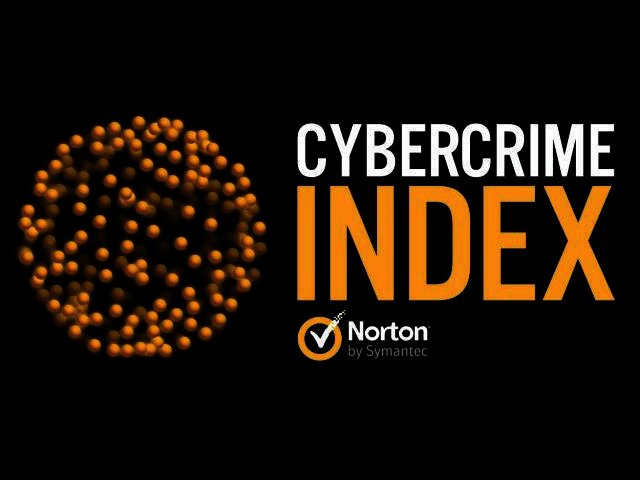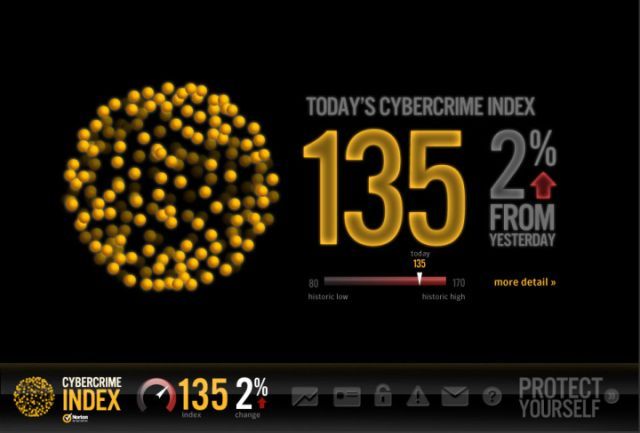PREVIOUS ARTICLENEXT ARTICLE
NEWS

Norton introduces the Cybercrime Index
By Staff Writer 18 February 2011 | Categories: news
Norton has introduced the Norton Cybercrime Index, which tracks and warns computer users about daily cybercrime risks around the world.
With recent threats like the Here You Have (H-Y-H) virus, which tried to shut down electronic communications worldwide, and the high-profile attacks by Zeus botnets, computer users need a tool that makes understanding today’s online threats simple and easy.
The Norton Cybercrime Index alerts consumers to today’s online trouble-spots and potential hazards, including the day’s most dangerous websites, the most hijacked search terms by cybercriminals, as well as top scams, identity theft and spam. The free tool includes expert news about the day’s most dangerous threat and advice on how to avoid it to stay safe online.
At its most basic, the Norton Cybercrime Index answers the question, “What’s your online risk today?,” showing you the day’s risk rating and putting it in the context of highs and lows, much like a stock index would. However, with the Norton Cybercrime Index, when the number goes up, consumers are more at risk.
The tool gives people one easy-to-understand visual for today’s level of online risk. The Norton Cybercrime Index can be viewed online, on a mobile device or downloaded onto a PC. Norton 360 version 5.0, which is available today, also provides quick access to the Norton Cybercrime Index.
In addition, people can track the Norton Cybercrime Index on Norton’s Facebook page. A dedicated tab features video and a live feed of the Index’s statistics and commentary. It also allows users to share multiple elements from the Index, including the latest cybercrime headlines, the most hijacked search terms and the most malicious websites.
“Most of us go online daily to work, play, and socialise, and yet it’s one of the most dangerous activities we engage in, because there are so many threats lurking online,” said Adam Palmer, Norton lead cyber security advisor. “Norton fights cybercrime in a number of ways, including through education. Our goal is to have people add the Norton Cybercrime Index to their daily routine to get a clear understanding of the dangers that are threatening them online, and to take preventative action to avoid falling victim.” (Continues below)

Norton Cybercrime screenshot
How it works
Whether people have ten seconds or two minutes, the Norton Cybercrime Index can give them the information they need to make smart decisions online and stay out of trouble. For example, computer users can take a quick look at the Norton Cybercrime Index in the morning to see if today’s threat level number is up or down from yesterday; this tells them at a glance if the internet is more dangerous than it was 24 hours ago.
People who have 30 seconds can check out the day’s most hijacked search terms, and which websites are the most dangerous, so they can stay away from those terms and sites. Consumers can then opt to take a deeper dive into the data to see exactly how cybercriminals are trying to take advantage of people online today.
The Norton Cybercrime Index consists of one number indicating today’s threat level. The number is based on an algorithm that calculates data from three sources. The primary source is the Symantec Global Intelligence Network, one of the industry’s most comprehensive sources of intelligence about online threats. The Symantec Global Intelligence Network monitors more than 130 million servers worldwide to keep track of new threats and attacks. In addition, consumer risk management firm ID Analytics, and DataLossDB, a research project from the Open Security Foundation, provide data about identity fraud and data loss, respectively.
All this raw information is fed into an algorithm, endorsed by the Institute for Cyber Security at The University of Texas San Antonio (UTSA), which assigns values to the number of online threats each day. This results in each day’s Norton Cybercrime Index number, updated every morning. An analyst provides ongoing commentary on each day’s threats, including warnings and recommendations about how to proceed with caution.
“Many people are leaving themselves wide open to identity fraud by sharing private information online, such as their birth date or home town. We see the results of this risky behavior with our unique real-time visibility into identity activity,” said Tom Oscherwitz, chief privacy officer of ID Analytics. “By contributing to the Norton Cybercrime Index, ID Analytics is helping to provide consumers with daily insight into their risk level for cybercrime and how they can better protect themselves and their identities online.”
Designed to inform and help people navigate around online threats, the Norton Cybercrime Index, coupled with a comprehensive security solution like Norton 360 version 5.0, which launched today, helps consumers stay one step ahead of cybercrime.

USER COMMENTS
Most Read Articles
Read

Magazine Online
TechSmart.co.za is South Africa's leading magazine for tech product reviews, tech news, videos, tech specs and gadgets.
Start reading now >
Download latest issue
Have Your Say
What new tech or developments are you most anticipating this year?
New smartphone announcements (45 votes)
Technological breakthroughs (29 votes)
Launch of new consoles, or notebooks (14 votes)
Innovative Artificial Intelligence solutions (29 votes)
Biotechnology or medical advancements (24 votes)
Better business applications (160 votes)



